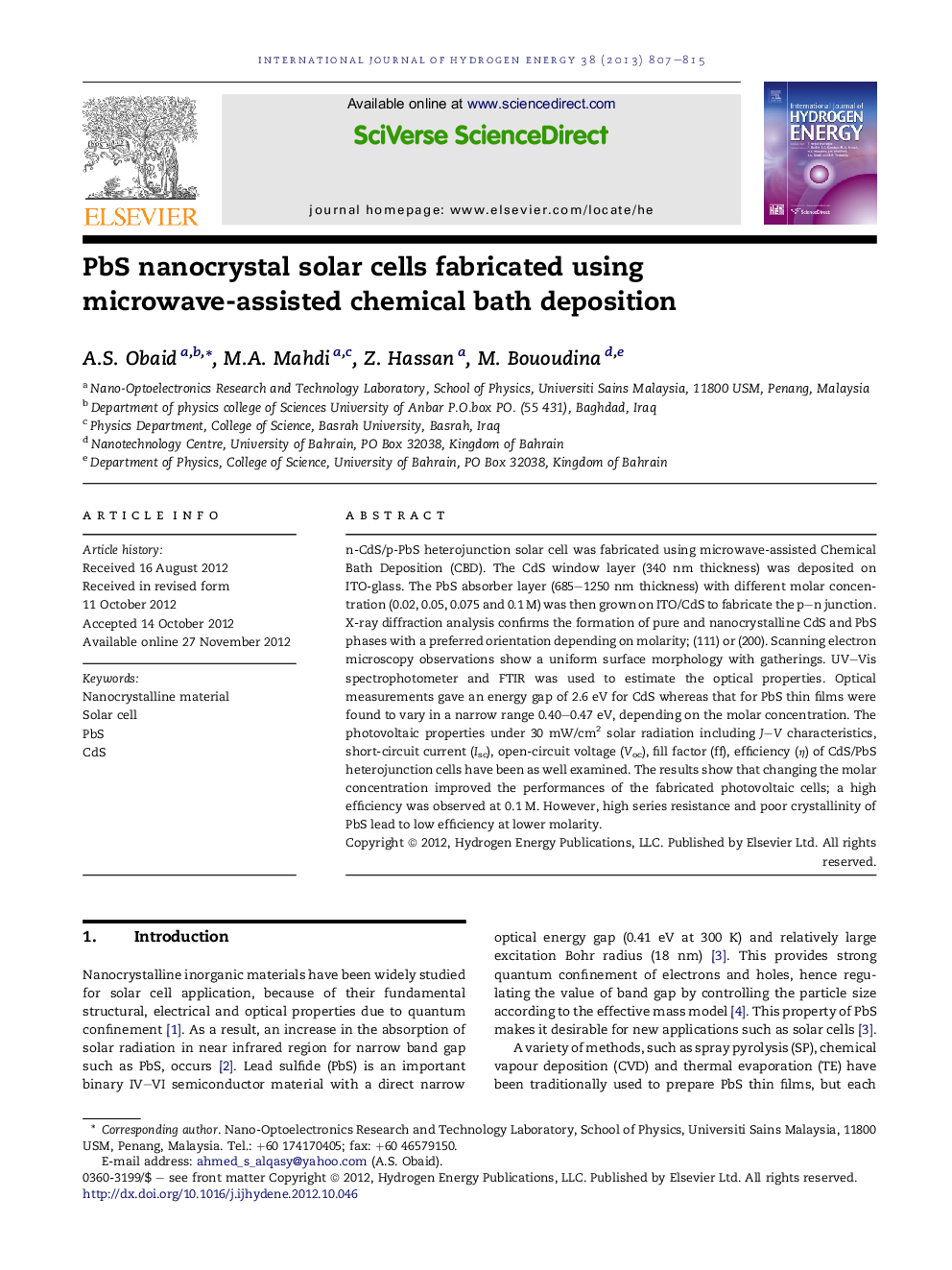| Article ID | Journal | Published Year | Pages | File Type |
|---|---|---|---|---|
| 1282046 | International Journal of Hydrogen Energy | 2013 | 9 Pages |
n-CdS/p-PbS heterojunction solar cell was fabricated using microwave-assisted Chemical Bath Deposition (CBD). The CdS window layer (340 nm thickness) was deposited on ITO-glass. The PbS absorber layer (685–1250 nm thickness) with different molar concentration (0.02, 0.05, 0.075 and 0.1 M) was then grown on ITO/CdS to fabricate the p–n junction. X-ray diffraction analysis confirms the formation of pure and nanocrystalline CdS and PbS phases with a preferred orientation depending on molarity; (111) or (200). Scanning electron microscopy observations show a uniform surface morphology with gatherings. UV–Vis spectrophotometer and FTIR was used to estimate the optical properties. Optical measurements gave an energy gap of 2.6 eV for CdS whereas that for PbS thin films were found to vary in a narrow range 0.40–0.47 eV, depending on the molar concentration. The photovoltaic properties under 30 mW/cm2 solar radiation including J–V characteristics, short-circuit current (Isc), open-circuit voltage (Voc), fill factor (ff), efficiency (η) of CdS/PbS heterojunction cells have been as well examined. The results show that changing the molar concentration improved the performances of the fabricated photovoltaic cells; a high efficiency was observed at 0.1 M. However, high series resistance and poor crystallinity of PbS lead to low efficiency at lower molarity.
► n-CdS/p-PbS heterojunction solar cell was fabricated using MACBD method. ► XRD analysis confirms the formation of pure and nanocrystalline CdS and PbS. ► SEM revealed that CdS thin film covered completely, no pinholes or cracks. ► All PbS films have uniform surface morphology over the substrate with gatherings. ► Molar concentration improved the performances of the fabricated photovoltaic cells.
